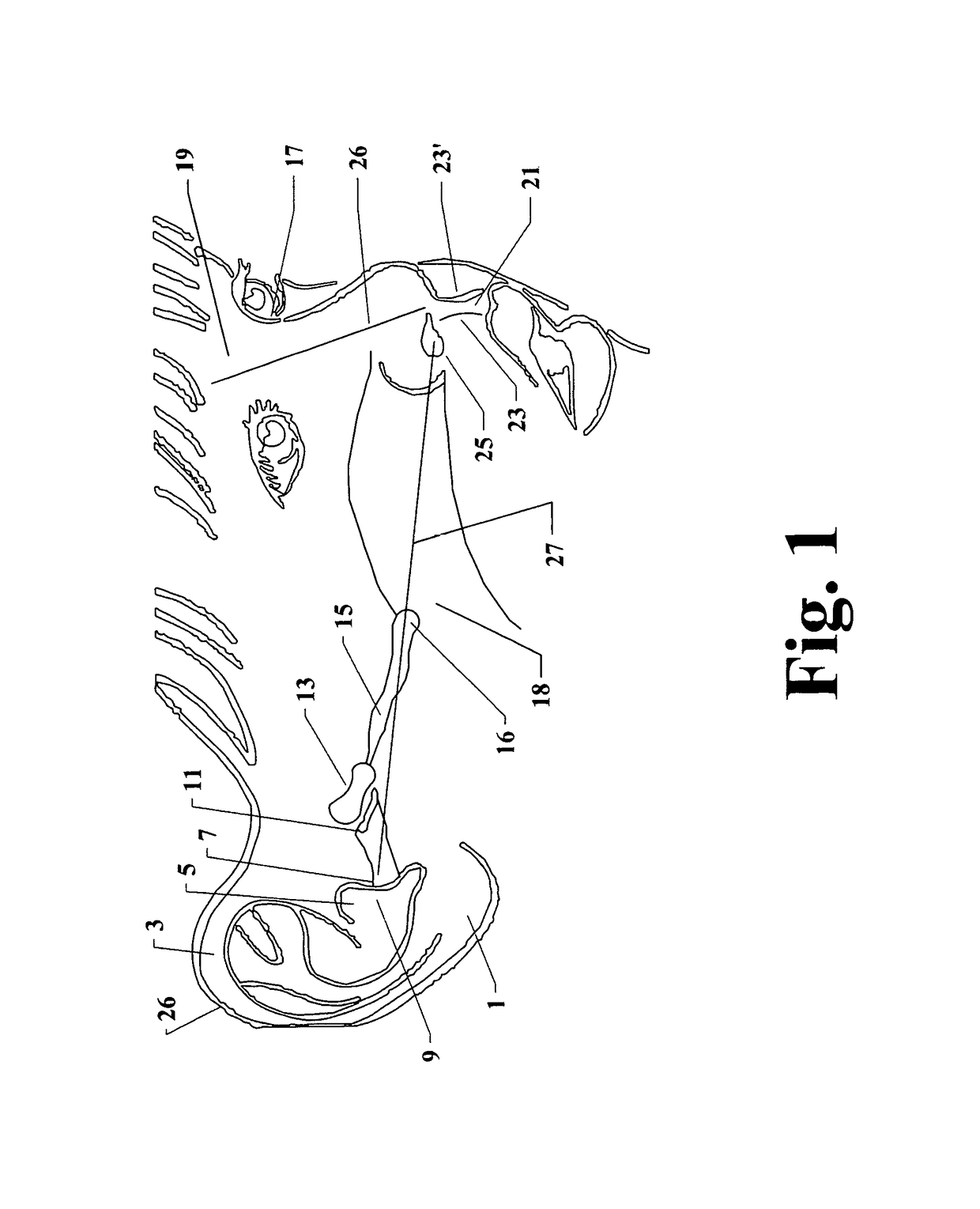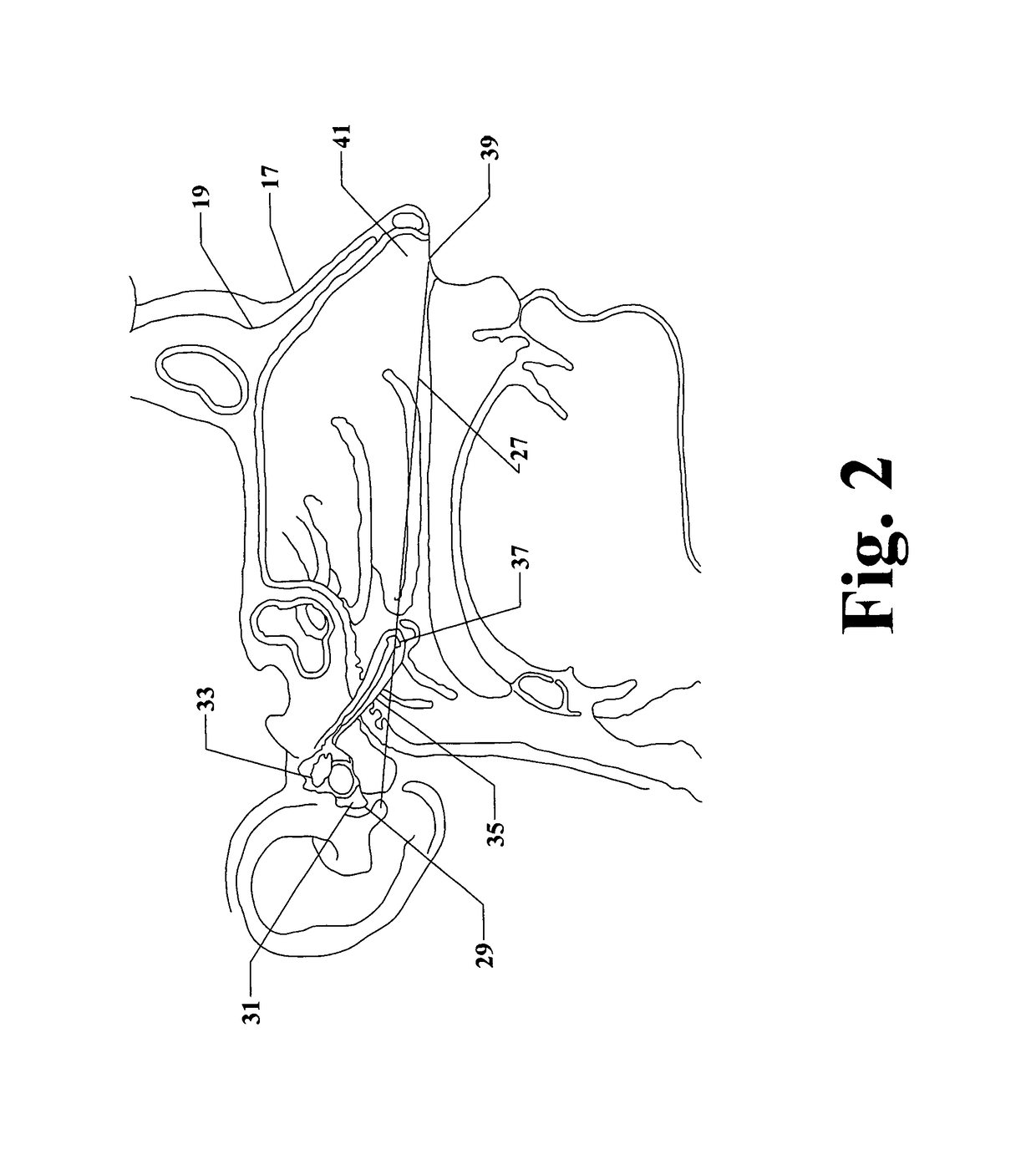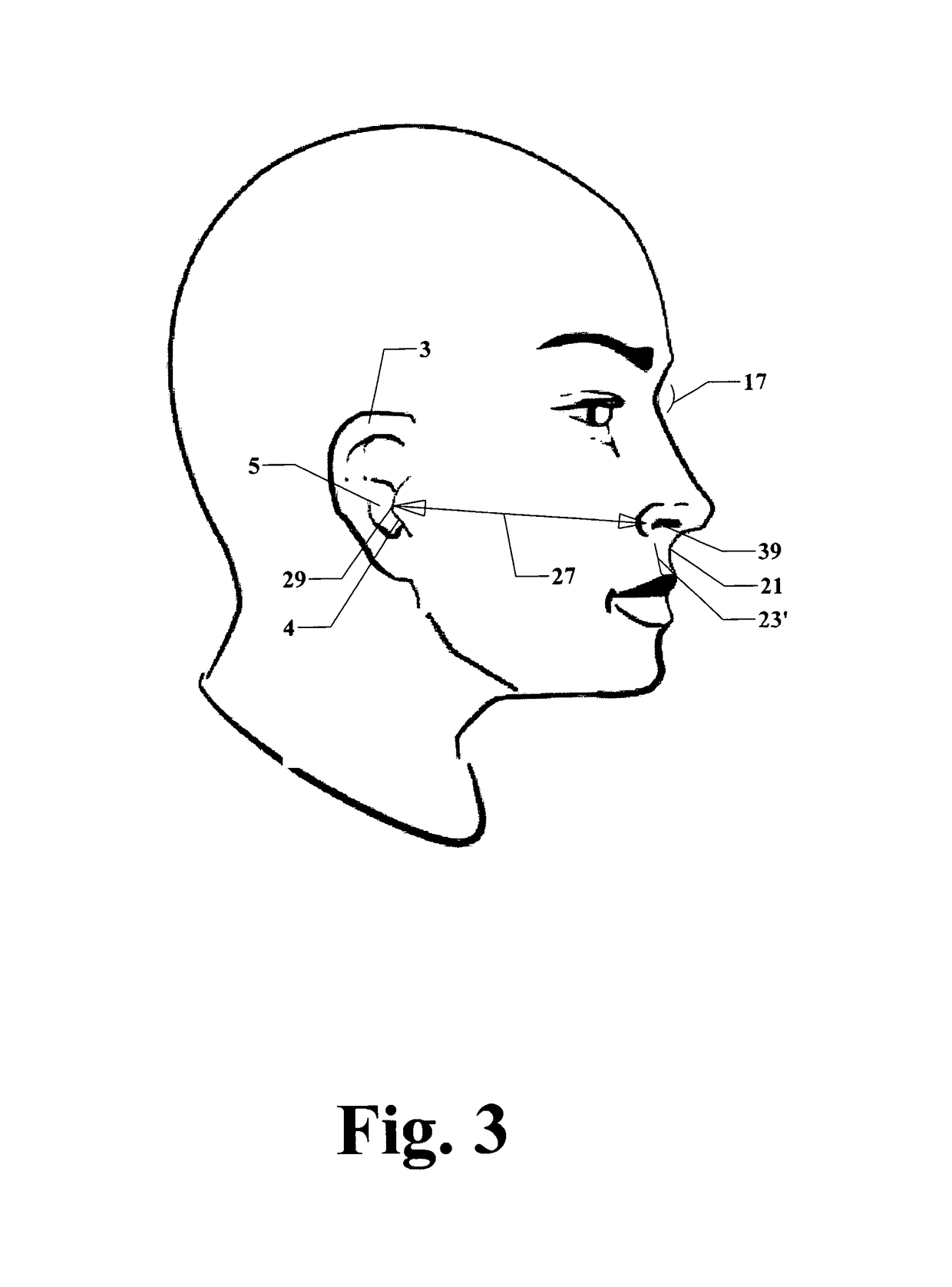Device and method for administration of compositions to the eustachian tube
a composition and eustachian tube technology, applied in the field of nasal administration devices, can solve the problems of ineffective application of a significant portion ineffective application of the mixture to other mucosal surfaces, and increased fluid pressure associated with otitis media with effusion, etc., to achieve the effect of rapid and uncomplicated delivery, proper and most efficient delivery of medications to an infant, and degree of compliance/patient cooperation
- Summary
- Abstract
- Description
- Claims
- Application Information
AI Technical Summary
Benefits of technology
Problems solved by technology
Method used
Image
Examples
Embodiment Construction
[0074]FIG. 1 illustrates the relative positions of several internal structures of the ear, nose, throat and mouth while also illustrating key—external—anatomical features of the child's face. The external structures of the ear 26 are illustrated including the lobule 1, the helix 3, the cavum conchae 5, a cup like depression located just anterior to the tragus 7. The tragus overlies a portion of the entrance to the external auditory meatus 9. As mentioned above, FIG. 1 also illustrates internal ear structures including the tympanic membrane 11 located and forming a barrier between the external auditory meatus 9 and the middle ear 13. The eustachian tube 15 is shown at its origin in the middle ear. It is further illustrated running—medially, anteriorly and inferiorly—to its lateral termination at the pharyngeal orifice 16 of the auditory tube 15 within the nasopharynx 18. FIG. 1 also illustrates the external landmarks of the nose including the bridge portion thereof 17. The location o...
PUM
 Login to View More
Login to View More Abstract
Description
Claims
Application Information
 Login to View More
Login to View More - R&D
- Intellectual Property
- Life Sciences
- Materials
- Tech Scout
- Unparalleled Data Quality
- Higher Quality Content
- 60% Fewer Hallucinations
Browse by: Latest US Patents, China's latest patents, Technical Efficacy Thesaurus, Application Domain, Technology Topic, Popular Technical Reports.
© 2025 PatSnap. All rights reserved.Legal|Privacy policy|Modern Slavery Act Transparency Statement|Sitemap|About US| Contact US: help@patsnap.com



